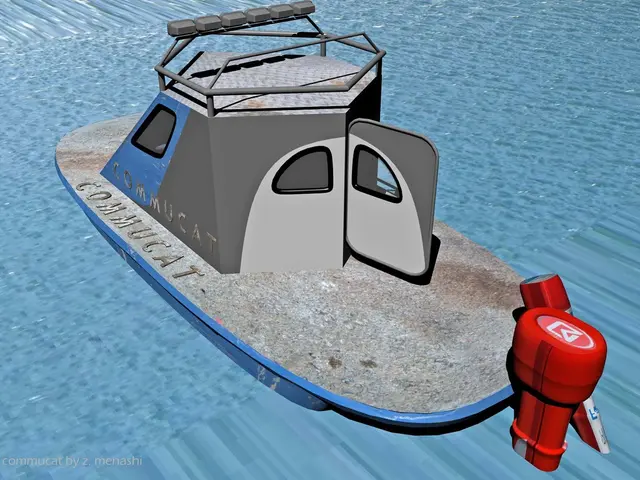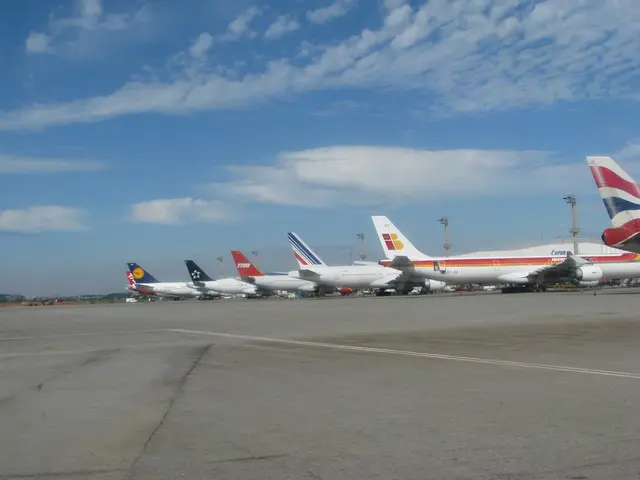Highly Stressed Hub: Denver International Airport Faces Intense Pressure
Denver International Airport (DIA): A Turbulent Journey
Behind its iconic tented terminal lies a whirlwind of challenges for Denver International Airport (DIA). Once a symbol of ambition and growth, DIA now grapples with mounting struggles, from construction fatigue to operational inefficiencies. As it stands as a critical gateway for millions of travelers, DIA faces a pivotal moment in its prestigious history.
The sink or swim battle is real for DIA, which welcomed a record-breaking 78 million passengers in 2023, a 12% increase over the previous year. Yet, DIA slid globally, dropping from the third to the sixth position among the world's busiest airports. This tumble isn't just a reflection of increased competition but also a manifestation of growing operational troubles.
The Great Hall Project, designed to modernize DIA and streamline passenger flow, has instead caused significant disruptions. Security lines stretch endlessly, construction zones clog the airport, and logistical bottlenecks test the traveler's patience. While DIA's leadership promises relief with new security checkpoints and advanced technology, these improvements haven't yet materialized.
DIA's construction woes have left passengers frustrated, creating a sense of perpetual incompletion. The airport’s ongoing renovations, from revamped concourses to expanded gates, aim to prepare DIA for the anticipated 100 million annual passengers by 2027 and 120 million by 2045. However, the constant construction has resulted in delays and cancellations.
CEO Phil Washington acknowledges these challenges, highlighting the need for patience as DIA transitions toward a more efficient hub. He promises that visible construction impacts will soon dissipate, offering travelers a sneak peek at what the completed Great Hall will look like - a Colorado-centric design with enhanced amenities.
DIA doesn't just struggle with construction, but it also grapples with operational inefficiencies. With nearly a quarter of flights delayed or canceled in 2024, DIA ranked among the worst U.S. airports for disruptions. These delays aren't just inconvenient for passengers but have broader economic and environmental consequences.
In spite of these setbacks, DIA shines in other areas. Its food and retail offerings reflect Colorado's unique culture, offering travelers memorable experiences despite the logistical hurdles. Recent expansions like Concourse A-East have added capacity to manage increasing passenger volumes.
As DIA forges ahead with its ambitious expansion plans, key priorities emerge:
- Infrastructure Modernization: Completing projects like the Great Hall and improving Pena Boulevard traffic flow is essential to reducing congestion.
- Operational Efficiency: Embracing technology to optimize security processes and reduce delays is crucial.
- Sustainability: Addressing environmental concerns related to expanded traffic and construction is vital for long-term viability.
- Customer-Centric Approach: Enhancing passenger experience through clear communication during disruptions can rebuild trust.
Diagonally positioned between growth and operational excellence, DIA remains a hub of promise and frustration - a testament to its ambition and the challenges that come with it. As DIA looks toward 2045, it must strike a delicate balance between its visionary aspirations and pragmatic solutions. With the ability to adapt swiftly while maintaining its role as an essential gateway for Colorado and beyond, lies its future success.
Additional Reads
- Economic Outlook 2025: Stormy Weather Ahead?
- Amazon's Stock Slump: Weathering the Storm
- To address its ongoing operational inefficiencies, DIA is contemplating an import of advanced technology for optimizing security processes, reducing delays, and improving overall performance.
- Beyond travel, DIA's significant ports serve as a catalyst for the global movement of goods, such as African exports, highlighting its role as a critical infrastructure component in the region's logistics network.
- As DIA continues to expand its capacity, it strives to incorporate elements of local Colorado lifestyle into the airport's design, creating an inviting ambience for travelers and visitors alike.
- Despite its woes, DIA remains a vital market hub, connecting millions of travelers each year to various destinations, including sports events and tourism attractions, fostering cultural exchange and boosting local economies.
- In the near future, the successful implementation of DIA's strategic priorities will chart a course for its future, empowering it to navigate the turbulent waters ahead and maintain its position as a beacon for global travel and commerce.







